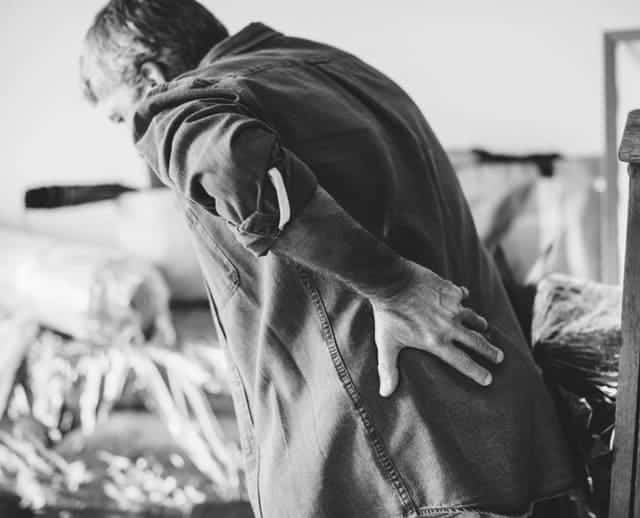What are custom orthotics?
Foot alignment issues resulting from painful foot conditions or injury can cause misalignment of the knee, resulting in further misalignment of the hip and spine, resulting in discomfort and chronic pain.
A custom orthotic is a prescription medical device designed to support and align the foot, as well as to correct or prevent existing mal-alignment, and to improve foot function and biomechanics. Custom orthotics can be discreetly fitted inside a shoe in order to provide comfort and pain relief when walking.
Custom orthotics are made for each patient using his or her foot imprints. Orthotics provide optimal biomechanics by reducing the stress and strain on the body, and re-aligning the foot by redirecting and reducing unwanted motion during the gait cycle.
How do custom orthotics help?
The foot is a complex network of bones, muscles, ligaments and tendons, which all act together to support the body’s weight and maintain proper equilibrium. The feet cushion all of our weight during walking and exercise, and act as shock absorbers, cushioning the large pressure forces generated by our bodies. Most custom-made orthotics can be discreetly worn inside the shoe.
Foot problems, such as fallen arches or localized foot pain, can result in loss of biomechanical equilibrium and overcompensation by other joints and structures, such as the hip, knee, and lower back, causing chronic pain and discomfort.
Custom orthotics are designed to provide the correct amount of foot support and properly balance the body’s forces when standing still, walking and exercising, thereby reducing pain, preventing foot deformity, and improving the overall biomechanical equilibrium of the body. They are individually designed using cutting edge foot mapping technology in order to produce the necessary support for each type of foot.
Clinical studies have demonstrated that podiatrist-prescribed foot orthotics are effective in reducing foot pain and improving foot function. Prescription orthotics can also help to prevent chronic pain in the knees, hips, lower back, and even in the neck.
How do I know if I have a problem?
During the initial evaluation appointment, the podiatrist carries out a detailed foot examination, including taking 3D images of each foot and biomechanical (gait) examination of the foot, ankle, leg and hip movement. If it is determined that custom orthotics are needed, the next step involves making a precise mold of the feet, which will subsequently be turned into rigid or soft custom orthotics.
Custom orthotics can help to support a fallen arch and relieve the pressure exerted on the foot. If you experience foot pain associated with medical conditions such as bursitis, plantar fasciitis, arthritis, or diabetes, custom orthotics can be an effective solution. In addition, custom orthotics can potentially help to avoid surgery to correct flat feet.
Let’s take a closer look at the conditions associated with fallen arches and localized foot pain:
Plantar Fasciitis:
The plantar fascia is a flat band of tissues, which connects the heel bone to the toes, and also serves to supports the arch of the foot. If the plantar fascia becomes strained, which sometimes can happen due to overly tightened Achilles tendon or wearing flat shoes with poor arch support, the plantar fascia can become inflamed or irritated, resulting in heel pain when standing or walking. This painful condition is referred to as plantar fasciitis, and can reduce the existing biomechanical support for the foot arch.
Arthritis:
Osteoarthritis is a type of joint disease resulting from the breakdown of joint cartilage and underlying bone. The lack of joint cartilage resulting from osteoarthritis can contribute to foot inflammation and pain. In addition, osteoarthritis results in slight changes in joint positions, which impairs proper foot biomechanics and force equilibrium, while reducing the support necessary to maintain the arch structure, thus resulting in a fallen arch.
Corns and calluses:
Corns and calluses are thick layers of the skin formed due to friction forces. The presence of corns and calluses on the foot indicates altered foot alignment, and can result from conditions such as diabetes. Corns and calluses can become painful, inflamed and irritated, and can also contribute to the loss of foot arch due to causing impaired biomechanics of the foot.
Bursitis:
Bursitis refers to the inflammation of the bursae, small fluid-filled sacs that cushion bones, tendons and muscles at the joints. Bursitis is most often caused by repetitive motion that put extra pressure on the bursae, resulting in pain and discomfort. Bursitis of the foot can result in impaired foot alignment, and can contribute to fallen arches and chronic foot pain.
Bunions (hallux valgus):
Hallux Valgus, also referred to as “bunions”, is a type of deformity located at the base of the big toe, causing it to deviate and point laterally, towards the other toes. These structural changes can cause muscle imbalance within the toe joints. In addition, since the big toe provides significant stability for the foot, changes in its position it can cause the arch to fall, resulting in reduced foot stability.
What should I do?
The feet are crucial in balancing the body’s forces while standing still, walking and playing sports. Loss of proper foot alignment can result in loss of biomechanical equilibrium in other structures of the body, including knee, hip and back.
Keeping your feet healthy is a necessary prerequisite in maintaining your health. If you experience any of the signs and symptoms described above, see your healthcare provider to determine if wearing custom orthotics could be the preferred solution for you.
What are the different types of custom foot orthotics?
- Sport orthotic: Sport orthotics are specifically designed to maintain the correct pronation and foot position during physical activity, and are typically used by athletes. These orthotics are meant to treat arch and forefoot pain, and can enhance performance and correct the biomechanics, and are custom-made for specific sport activities, including tennis, running, track and field, soccer and hockey.
- Casual orthotics: Casual orthotics are designed for everyday wear, and are custom made for each individual’s arch and foot profile to maximize comfort and correct foot alignment while walking. Casual orthotics are a great solution to foot pain for individuals who have jobs that require long periods of standing, in order to provide foot support and decrease the strain on the foot’s muscles and joints.
- Dress orthotics: Designed specifically to be worn inside dress shoes, dress orthotics are a good solution for individuals who need to wear tighter-fitting dress shoes on a daily basis. Dress orthotics are typically narrower and have shallow heel cups in order to fit inside tighter shoes, providing the necessary foot support and improving foot alignment.
- Specialty orthotics: Specialty orthotics can be designed according to each individual’s needs and lifestyle, in order to provide the maximum support and comfort. Specialty orthotics are designed to best accommodate each individual’s foot structure, and can come in varying sizes and levels of rigidity.
References:
https://www.webmd.com/pain-management/what-are-shoe-orthotics


















